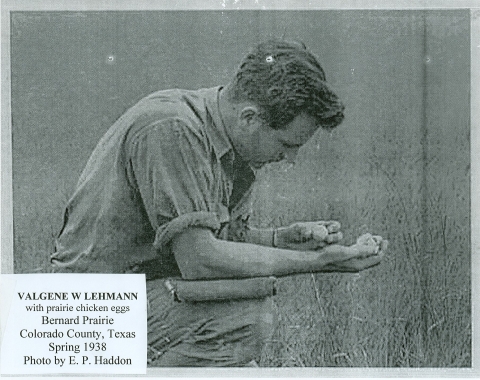About Us
Attwater Prairie Chicken National Wildlife Refuge was established in 1972 to provide habitat for one of the last populations of the critically endangered Attwater’s Prairie-Chicken, a ground-dwelling grouse of the coastal prairie ecosystem. This habitat once spanned over 6 million acres from Corpus Christi to southwest Louisiana, but now less than 1% of this fragmented coastal prairie remains. With so little of its home left, the Attwater’s Prairie-Chicken has become one of the most endangered birds in North America. The 10,541-acre refuge offers one of the last hopes for survival of this charismatic bird. Located approximately 60 miles west of Houston, Texas, this refuge is home to one of the largest remnants of native coastal prairie remaining in southeast Texas.
Attwater Prairie Chicken National Wildlife Refuge is one of a handful of national wildlife refuges established specifically for an endangered species. The refuge is managed to maintain or improve native coastal prairie communities for Attwater’s Prairie-Chicken’s reintroduction and survival. Management of this bird’s habitat benefits all native wildlife that inhabits this coastal prairie habitat. The refuge is one of the few places to get a glimpse into the past of what the Houston area used to look like before European settlement, where spring wildflowers bloomed, deer pranced, and prairie-chickens danced through the tall-grass prairie.
To learn more about the Attwater's Prairie-Chicken and this refuge, watch this informative video made by the Friends of Attwater Prairie Chicken Refuge.
Our Mission
The mission of the National Wildlife Refuge System is to administer a national network of lands and waters for the conservation, management and, where appropriate, restoration of the fish, wildlife and plant resources and their habitats within the United States for the benefit of present and future generations of Americans.
Our Purpose
Every national wildlife refuge national wildlife refuge
A national wildlife refuge is typically a contiguous area of land and water managed by the U.S. Fish and Wildlife Service for the conservation and, where appropriate, restoration of fish, wildlife and plant resources and their habitats for the benefit of present and future generations of Americans.
Learn more about national wildlife refuge was created for a special purpose. Some were created to protect migratory birds, others to protect threatened or endangered species or unique habitats, while others fulfill another special purpose. Refuges are special places where wildlife comes first. All activities allowed on refuges must be evaluated to make sure each activity will not conflict with the reason the refuge was founded.
In 1972, the World Wildlife Fund donated approximately 2,600 acres to the U.S. Fish and Wildlife Service to establish the Attwater Prairie Chicken National Wildlife Refuge for the purpose of providing a sanctuary for one of the last populations of the Attwater’s Prairie-Chicken. The refuge is specifically managed to maintain or improve native coastal prairie communities for prairie-chicken reintroduction and survival, as well as for the benefit of other important fish and wildlife resources.
While those were the specific reasons for the establishment of the refuge, the purposes of the refuge will always remain:
- to conserve fish or wildlife which are listed as endangered or threatened species.
- for the development, advancement, management, conservation and protection of fish and wildlife resources.
Our History
Late 1800s - The Attwater’s Prairie-Chicken population once numbered nearly one million birds. The decline of the population coincided with the period of rapid European settlement of the Texas coastal prairies and their conversion to agricultural use. Acre by acre, coastal prairies diminished as cities and towns sprouted up, industries grew and expanded, and farmers plowed up native grasslands for croplands or tame pasture. Suppressing prairie fires also allowed brush species to invade prairies. See the Attwater’s Prairie-Chicken’s page for a history of this species’ decline.
1965 – Biologist Val Lehmann, who chronicled the decline of the Attwater’s Prairie-Chicken, was approached by I.V. Duncan and his son Gardner Duncan with an offer to sell 2,580 acres of their land in Colorado County, and Mr. and Mrs. David Wintermann agreed to sell an adjoining 840 acres. The World Wildlife Fund secured funding to acquire both properties at approximately half their market value to establish a preserve for the Attwater’s Prairie-Chicken. Both families donated the balance of the value of these initial 3,500 acres. Retired State game warden Thomas T. Waddell was hired as a part-time caretaker of the original preserve.
1967 – After a decline from 8,700 birds in 1937 to only 1,070 birds 30 years later, the Attwater’s Prairie-Chicken was designated as endangered when the first list of native species threatened with extinction was published in the Federal Register.
1968 - The National Park Service designated the World Wildlife Fund lands as the Attwater Prairie Chicken Preserve National Natural Landmark National Natural Landmark
The National Natural Landmarks Program preserves sites illustrating the geological and ecological character of the United States. The program aims to enhance the scientific and educational value of the preserved sites, strengthen public appreciation of natural history and foster a greater concern for the conservation of the nation’s natural heritage. The program was established in 1962 by administrative action under the authority of the Historic Sites Act of 1935. The first National Natural Landmarks were designated in 1963. Today, there are more than 600 National Natural Landmarks in 48 states, American Samoa, Guam, Puerto Rico and the U.S. Virgin Islands.
Learn more about National Natural Landmark , part of their National Natural Landmarks Program.
1972 – Attwater Prairie Chicken National Wildlife Refuge was officially established on July 1, 1972, when 687 acres were purchased by the Service from the Verhuel Estate at the site of the present refuge headquarters.
1973 – The establishment of the Endangered Species Act provided immediate protection for the prairie-chicken.
1970s – Wintermann lands were sold and the Duncan tract was donated to the service. Several other acquired tracts followed to establish a core area of 7,984 acres by 1980. Today, the total refuge area is now approximately 10,541 acres.

